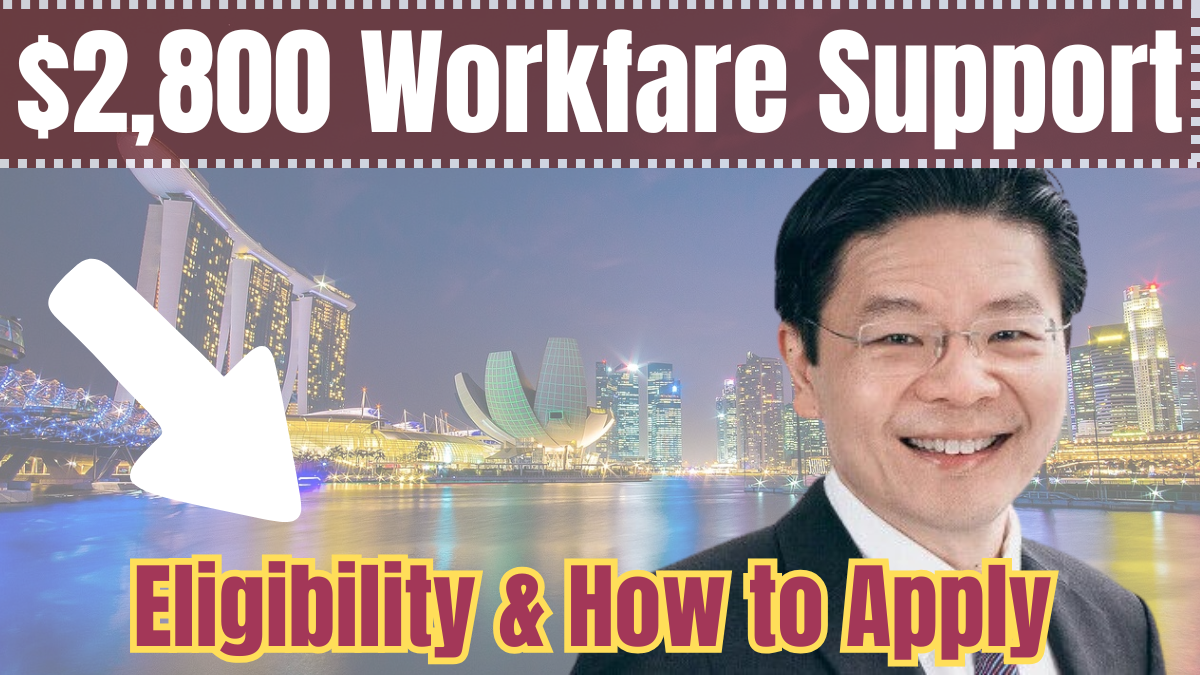The Workfare Income Supplement (WIS) scheme is a government support program designed to boost the income and MediSave savings of lower-income workers, including self-employed persons (SEPs). It ensures that SEPs receive financial assistance while contributing towards their healthcare and retirement savings.
Under the WIS scheme, eligible self-employed individuals can receive up to $2,800 annually, with payments split into:
- 10% cash payouts for immediate financial support.
- 90% MediSave contributions to enhance long-term healthcare security.
This initiative recognizes the financial challenges SEPs face, offering both short-term relief and long-term financial stability.

Key Details About the $2,800 Workfare Support for Self-Employed
| Aspect | Details |
|---|---|
| Maximum Annual Payout | $2,800 |
| Payout Structure | 10% cash, 90% MediSave contributions |
| Eligibility Criteria | SEPs aged 30+ with net trade income of $500–$2,500 |
| Application Process | Declare income and contribute to MediSave |
| Enhancements (2025) | Income ceiling increased to $3,000, higher payouts |
| Official Resource | CPF Board’s WIS Page |
Eligibility Criteria for the $2,800 WIS Support for Self-Employed
To qualify for Workfare Income Supplement (WIS) as a self-employed person, you must meet the following conditions:
1. Age Requirement
- Must be 30 years old or older by December 31 of the work year.
- No minimum age applies for individuals with disabilities.
2. Income Range
- Must have an annual net trade income between $500 and $2,500.
- From 2025 onwards, the income ceiling will increase to $3,000, expanding eligibility.
3. Mandatory MediSave Contributions
- SEPs must make MediSave contributions based on their income levels.
- Contributions must be up to date for the relevant work year.
4. Property Ownership Restrictions
- Applicants must not own more than one property.
- Property’s annual value must not exceed $21,000.
- For married applicants, their spouse’s income should not exceed $70,000 per year.
These eligibility rules ensure that financial aid is given to lower-income self-employed individuals who need support for both daily expenses and long-term savings.
How are WIS Payments Distributed?
The Workfare payouts are structured as follows:
1. Cash Payment (10%)
- Direct bank deposit via PayNow (linked to NRIC).
- If no bank account is registered, payments are made through GovCash.
2. MediSave Contribution (90%)
- Funds are credited to the MediSave account to support healthcare and retirement savings.
This distribution method ensures that self-employed individuals have both financial support for daily expenses and substantial savings for medical needs.
How to Apply for WIS as a Self-Employed Person?
Applying for Workfare Income Supplement (WIS) is straightforward, but self-employed persons must meet the necessary conditions.
Step 1: Declare Your Income
- File your annual net trade income with the Inland Revenue Authority of Singapore (IRAS).
- Income declaration must be submitted between March 1 and April 18 each year.
Step 2: Make MediSave Contributions
- Ensure that all required MediSave contributions are paid before applying.
- Payments can be made online via the CPF website.
Step 3: Update Bank Details for Payment
- Register bank account details with CPF for smooth processing.
- Link PayNow to your NRIC to receive cash payouts quickly.
Step 4: Check Eligibility Status
- Visit the CPF Board website or call their customer service hotline for status updates.
By following these steps, self-employed individuals can ensure they receive their full benefits under the WIS scheme.
Upcoming Enhancements to the WIS Scheme in 2025
From 2025 onwards, the Workfare scheme will undergo several changes to increase financial support for self-employed individuals.
Key Updates:
- Higher Income Ceiling:
- The income ceiling will increase from $2,500 to $3,000, allowing more SEPs to qualify.
- Increased Payouts:
- Adjustments will be made to reflect inflation and rising living costs.
These enhancements reinforce the government’s commitment to supporting self-employed individuals in managing financial challenges.
Benefits of the WIS Scheme for Self-Employed Persons
The Workfare Income Supplement (WIS) scheme provides several advantages for self-employed individuals:
1. Financial Stability
- The cash payout provides immediate financial relief.
- Helps cover essential daily expenses for SEPs.
2. Healthcare & Retirement Savings
- The MediSave contributions ensure that SEPs save for medical expenses and future needs.
- Supports long-term financial security.
3. Encourages Income Declaration
- The scheme incentivizes accurate income reporting, promoting greater transparency in tax declarations.
4. Alignment with Retirement Goals
- MediSave contributions enhance CPF savings, ensuring better financial security in later years.
FAQs
1. Who qualifies for the $2,800 Workfare Income Supplement?
Self-employed persons (SEPs) aged 30+ who earn between $500 and $2,500 per year and have made MediSave contributions.
2. How is the WIS payout structured?
- 10% cash paid via PayNow or GovCash.
- 90% MediSave contributions for healthcare savings.
3. Do I need to declare my income to qualify?
Yes, SEPs must declare their annual trade income with IRAS and ensure MediSave contributions are up to date.
4. When will the 2025 enhancements take effect?
The new income ceiling of $3,000 and increased payouts will be effective from January 2025.
5. How do I check my eligibility?
You can check eligibility via CPF Board’s WIS portal or by calling CPF customer service.
6. What if I miss my MediSave contribution deadline?
Failure to make MediSave contributions could disqualify you from receiving WIS benefits.
7. Can I receive WIS if I own multiple properties?
No, applicants cannot own more than one property, and the property’s annual value must not exceed $21,000.
Click here to know more.
Aanchal is a passionate writer with a keen interest in storytelling, content creation, and creative expression. She enjoys exploring diverse topics and crafting engaging narratives that captivate readers.